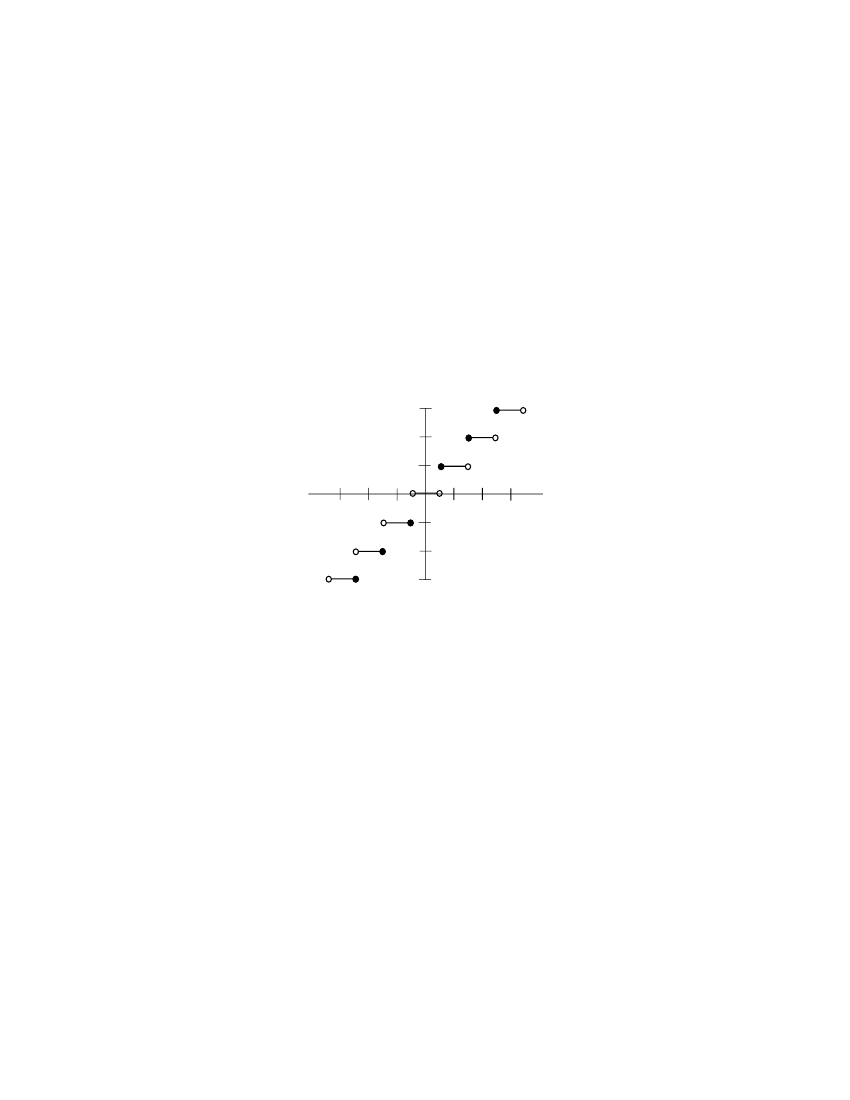
TIFF 6.0 Specification
Final—June 3, 1992
Although the exact method for computation of the DCT and IDCT is not subject
to standardization and will not be specified by JPEG, it is probable that JPEG will
adopt DCT-conformance specifications that designate the accuracy to which the
DCT must be computed. The DCT-conformance specifications will assure that
any two JPEG implementations will produce visually-similar reconstructed im-
ages.
Quantization
The coefficients of the DCT are quantized to reduce their magnitude and increase
the number of zero-value coefficients. The DCT coefficients are independently
quantized by uniform quantizers. A uniform quantizer divides the real number
line into steps of equal size, as shown in Figure 2. The quantization step-size
applied to each coefficient is determined from the contents of a 64-element quan-
tization table.
C (u,v)
3
2
1
F (u,v)
-3 Q
-2 Q
-1 Q
-1
1Q
2Q
3Q
-2
-3
Figure 2. Uniform Quantization
The baseline process provides for up to 4 different quantization tables to be de-
fined and assigned to separate interleaved components within a single scan of the
input image. Although the values of each quantization table should ideally be
determined through rigorous subjective testing which estimates the human
psycho-visual thresholds for each DCT coefficient and for each color component
of the input image, JPEG has developed quantization tables which work well for
CCIR 601 resolution images and has published these in the informational section
of the proposed standard.
DC Prediction
The DCT coefficient located in the upper-left corner of the transformed block
represents the average spatial intensity of the block and is referred to as the “DC
coefficient”. After the DCT coefficients are quantized, but before they are entropy
coded, DC prediction is performed. DC prediction simply means that the DC term
of the previous block is subtracted from the DC term of the current block prior to
encoding.
97